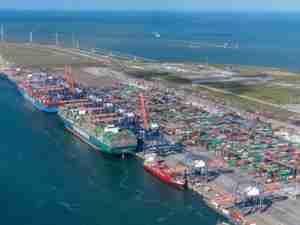“Retail sales are starting to improve and retailers are importing merchandise in the quantities they need to meet that demand,” NRF Vice President for Supply Chain and Customs Policy Jonathan Gold said. “We expect these numbers to continue to climb as merchants and their customers move away from the recession and back toward normal shopping habits.”
U.S. ports handled 1.01 million Twenty-foot Equivalent Units in February, the latest month for which actual numbers are available. That was down 6 percent from January as shipping hit its traditional slow point for the year but up 20 percent from the unusually low numbers seen during February 2009. It was also the third month in a row to show a year-over-year improvement after December broke a 28-month streak of year-over-year monthly declines. One TEU is one 20-foot cargo container or its equivalent.
March was estimated at 1.02 million TEU, a 6 percent increase over last year as spring products began to head for store shelves. April is forecast at 1.07 million TEU, up 8 percent from last year; May at 1.12 million TEU, up 7 percent’ June at 1.18 million TEU, up 17 percent; July at 1.24 million TEU, up 12 percent; and August at 1.32 million TEU, up 15 percent.
The first half of 2010 is expected to total 6.5 million TEU, up 10 percent. Imports for 2009 totaled 12.7 million TEU, down 17 percent from 2008’s 15.2 million TEU and the lowest since the 12.5 million TEU reported in 2003. The forecast for first-half growth is down from the 17 percent increase projected a month ago as more recent data becomes available.
“Port volumes have begun to rebound and we expect growth to continue going forward,” Hackett Associates founder Ben Hackett said. “Retailers were maintaining lean inventories during the recession but are carefully building back up.”
Global Port Tracker, which is produced for NRF by the consulting firm Hackett Associates, covers the U.S. ports of Long Angeles/Long Beach, Oakland, Seattle and Tacoma on the West Coast; New York/New Jersey, Hampton Roads, Charleston and Savannah on the East Coast, and Houston on the Gulf Coast. The report is free to NRF retail members, and subscription information is available at www.nrf.com/PortTracker or by calling (202) 783-7971. Subscription information for non-members can be found at www.globalportracker.com.
The National Retail Federation is the world's largest retail trade association, with membership that comprises all retail formats and channels of distribution including department, specialty, discount, catalog, Internet, independent stores, chain restaurants, drug stores and grocery stores as well as the industry's key trading partners of retail goods and services. NRF represents an industry with more than 1.6 million U.S. retail establishments, more than 24 million employees - about one in five American workers - and 2008 sales of $4.6 trillion. As the industry umbrella group, NRF also represents more than 100 state, national and international retail associations. www.nrf.com.










